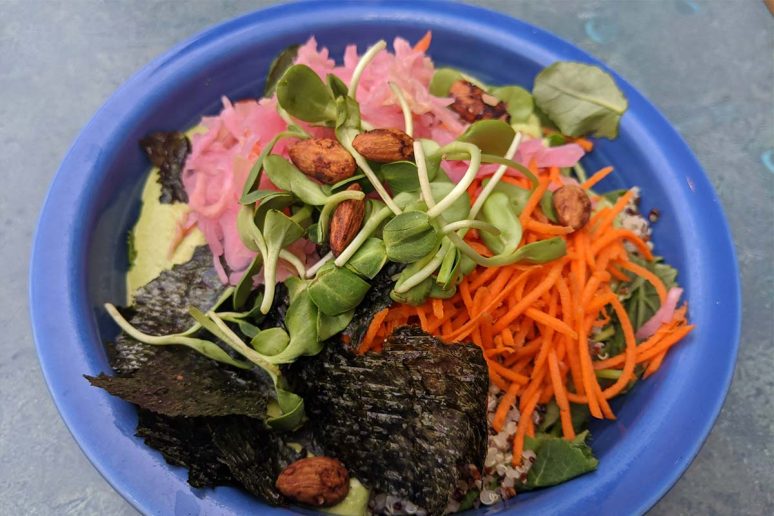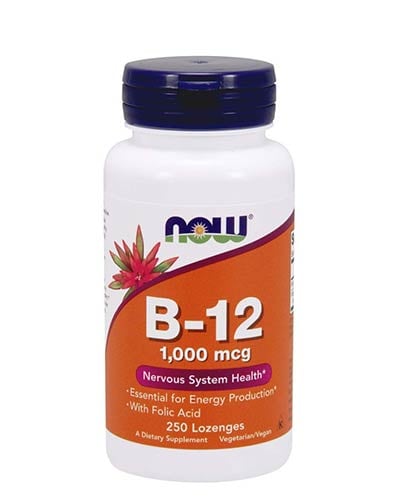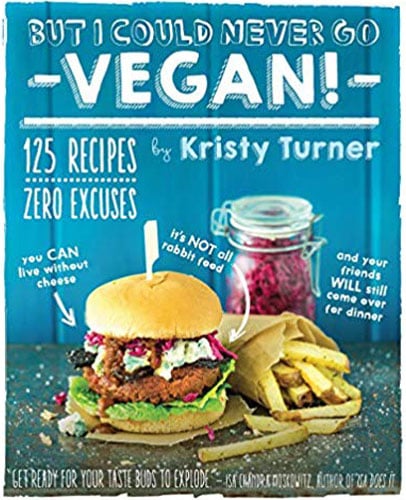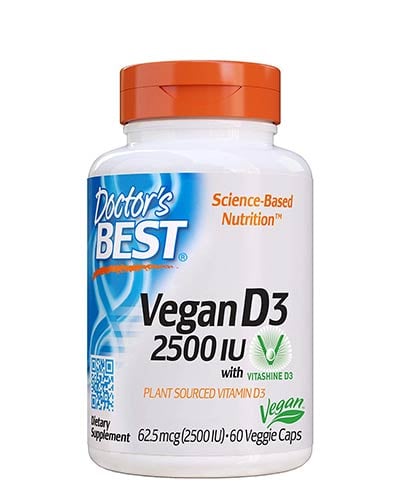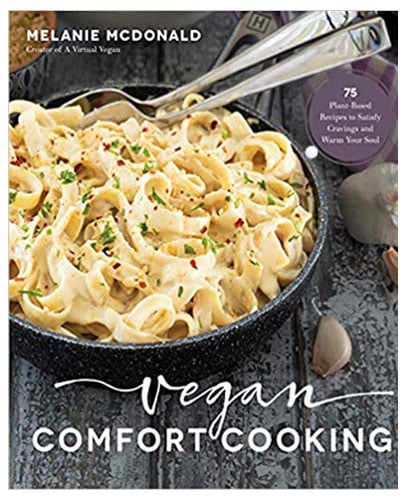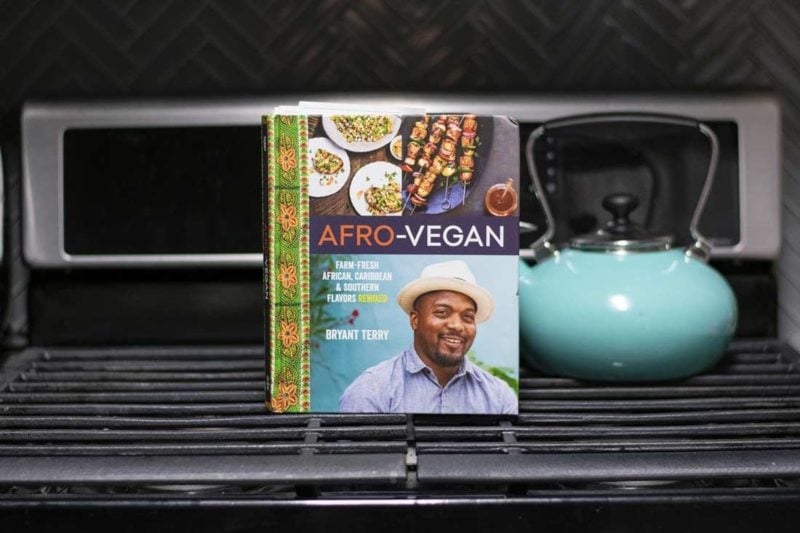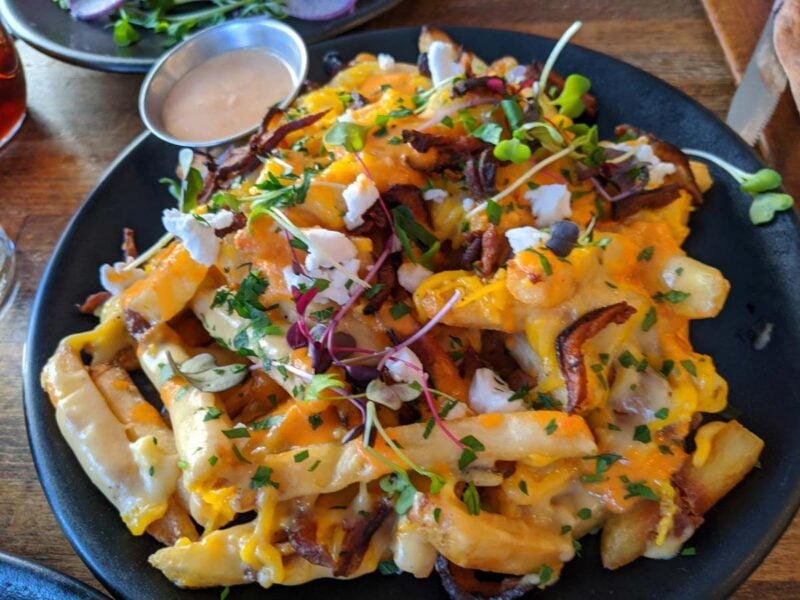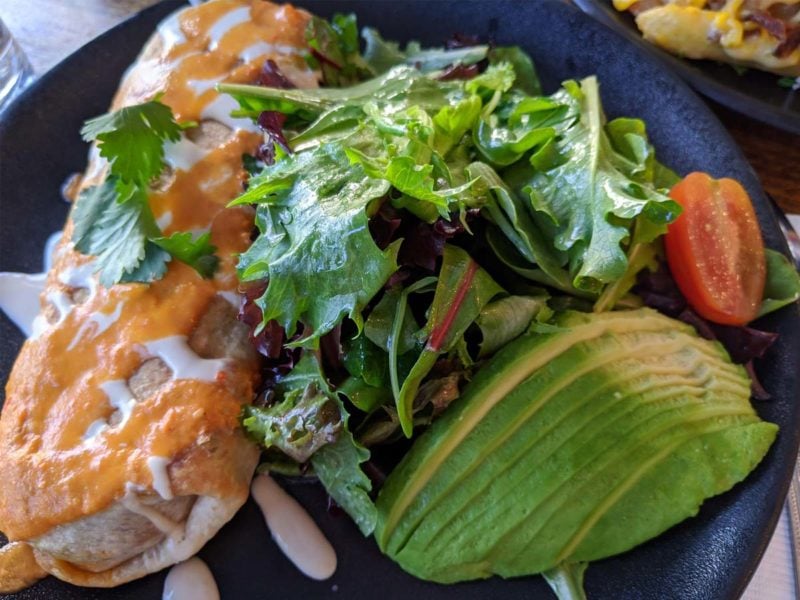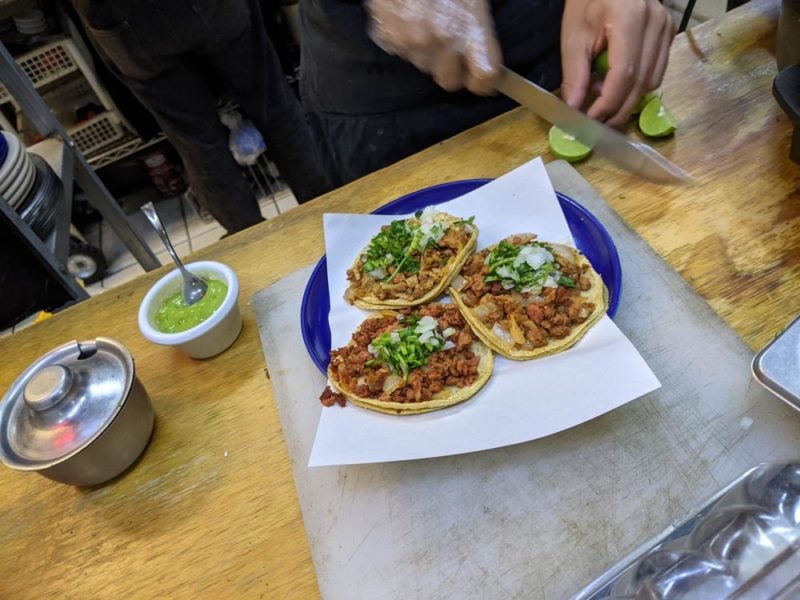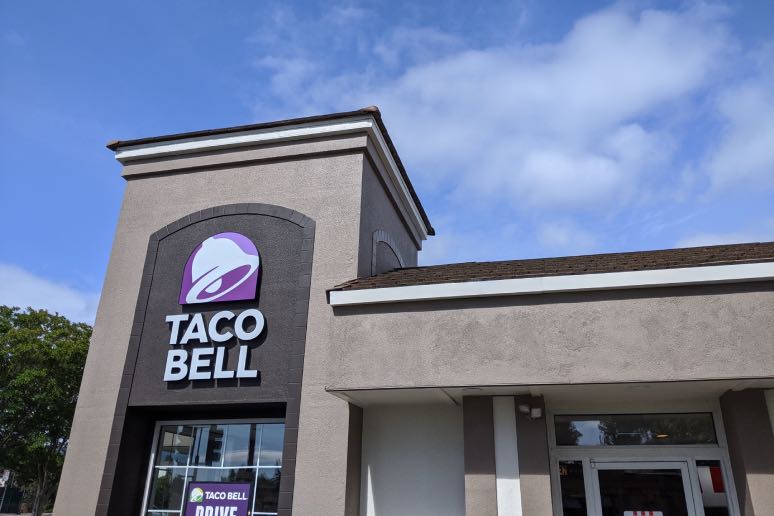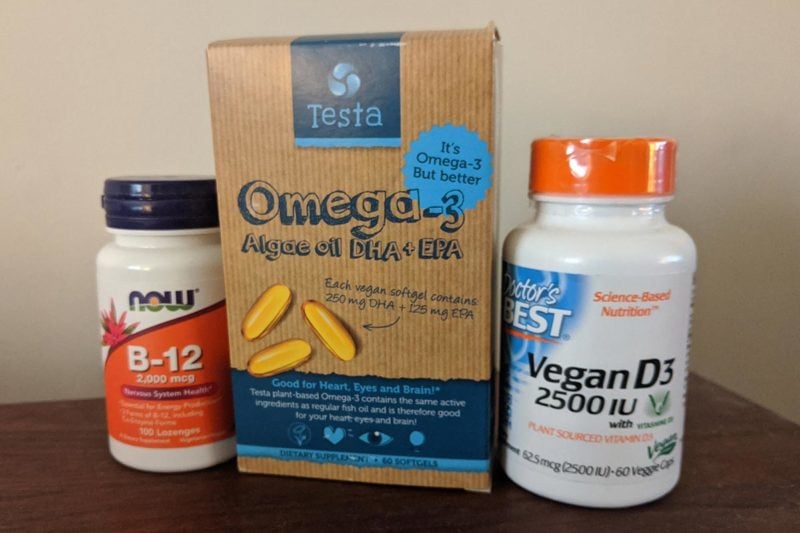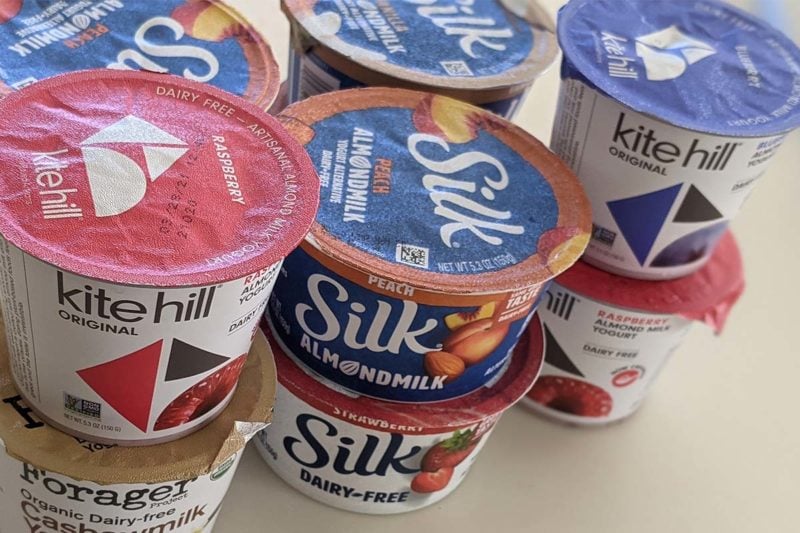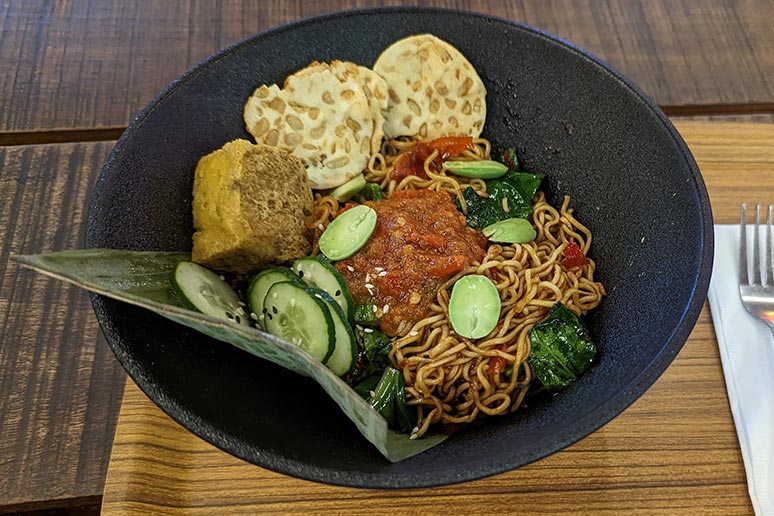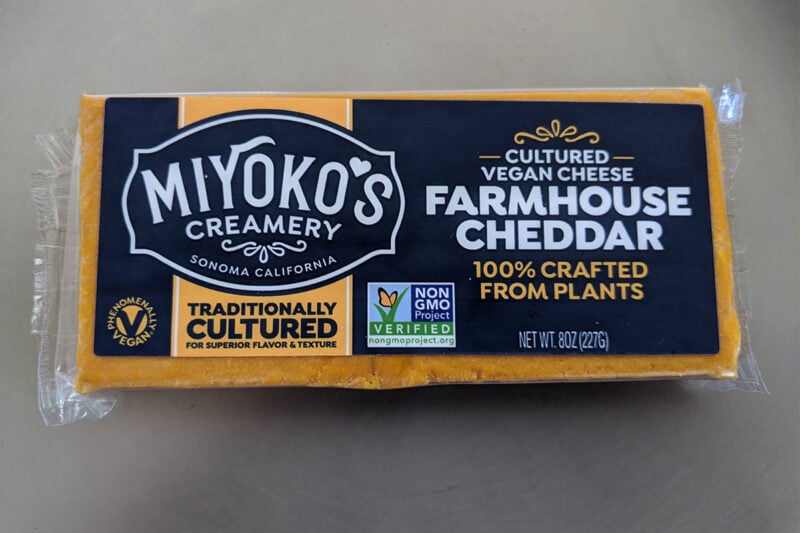At their best, vegan salads are one of the most satisfying foods in existence. Unfortunately, salads often suffer from unimaginative preparation. You’ll often get a meager assortment of not-very-fresh vegetables. No wonder it’s a menu item that many people shy away from. Nobody wants a bland almost-meal that leaves you hungry. But it’s easy to do salad right. When prepared with a little effort and enthusiasm, salads become worthy of eating every day.
Necessary Kitchen Items
So, how do you elevate your salads from OK to amazing? To start, if you want to make outstanding salads that include lettuce and other greens, you must have a contraption known as a salad spinner. These whirring devices may seem like yet another of those gimmicky kitchen gadgets that never quite work as advertised, but the truth is that they are indispensable to making a fantastic salad.
In fact, a salad spinner is right up there with a chef’s knife, a skillet, and a cutting board as items no kitchen should be without. Why are they a crucial tool for salad preparation? It stems from the fact that oil and water don’t mix—so if your lettuce and greens are even slightly wet, your salad dressing will slide off your veggies quicker than rain off a raincoat. Since the dressing won’t cling to your vegetables, you’ll end up with a watery pool of dressing on your plate. Blech.
Apart from a salad spinner, the only equipment you’ll need is a chef’s knife, a mixing bowl for washing your vegetables (or, better yet, just use the bowl part of your salad spinner), and a large cutting board. If your kitchen sometimes prepares meat, it’s wise to have a separate cutting board just for vegetables to prevent cross-contamination. Though not strictly necessary, a grater can further liven up your salads by enabling you to add grated carrots, beets, cabbage, or peeled broccoli stalks.

Vegan Salad Ingredients
Once you have the required kitchen equipment, your next step is to go beyond the usual assortment of vegetables. Lettuce, cucumber, and tomatoes are all fine, but why not get creative and add at least a five other items? Apart from raw hard winter squash or potatoes, pretty much every vegetable in the produce section is fair game. Here are some especially good choices:
- shredded spinach or kale
- sliced bell peppers
- grated carrots or beets
- sprouts of any kind
- sliced radishes
- thinly-sliced purple cabbage (adds wonderful color)
- sugar snap peas (always de-stringed!)
Remember that super-fresh vegetables are key to a great salad. Since salad vegetables are usually raw, their quality and freshness (or lack thereof) are obvious.
And don’t forget that both broccoli and cauliflower are fantastic on salads. Unfortunately, they’re often broken into big, imposing pieces. Instead, consider slicing them thinly. Prepared that way, they’ll give your salad a nice crunch that provides an altogether different texture than a salad based only on lettuce. And always remove the skin of the floret stems, as it doesn’t break down when chewed.
Once you’ve selected your veggies, it’s time to give some thought to how to serve your salad. Most people just use a dinner plate, but a large bowl is a superior choice since it’ll do a better job of containing all your vegetables and dressing. In fact, to digress for a moment, dinner bowls are superior to plates for a variety of meals.
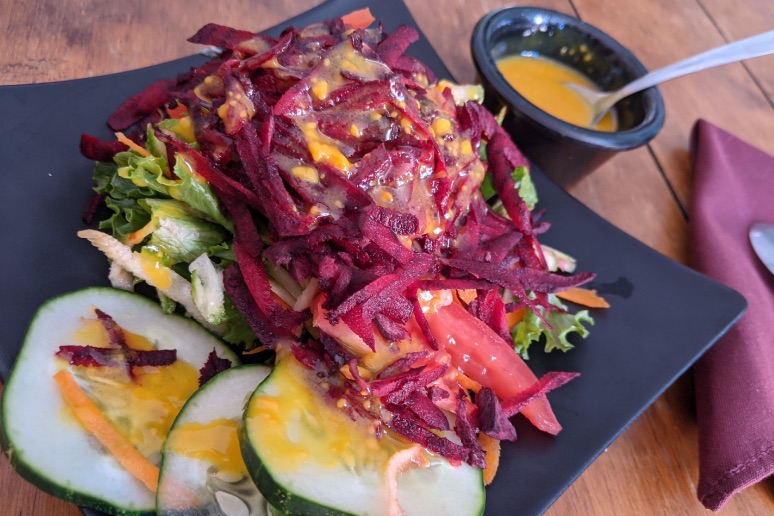
Dressings
Bottled salad dressings are needlessly expensive, and they’re often made from low-quality oils. Better to make your own dressings based on good fresh ingredients like avocados, tahini, or extra virgin olive oil. A simple dressing made by whisking together tahini, lemon juice, minced garlic, tamari, and water is all you’ll ever need. For more easy and delicious dressing ideas, please see our salad dressings page.
If you must go commercial, one of tastiest dressings on the market is Annie’s Goddess Dressing.
Salad Toppings
A common complain about salads is that they don’t fill you up. It’s frustrating to eat a huge salad and then discover yourself hungry thirty minutes later. That won’t happen if you garnish your salad with one or two protein-rich ingredients, such as:
- roasted pumpkin seeds or sunflower seeds
- chopped nuts (tamari roasted almonds are especially great)
- roasted hemp seeds or sesame seeds
- slices of baked or sautéed tamari-seasoned tempeh or tofu
- black beans or kidney beans
- pine nuts (expensive but outrageously tasty on salads)
- nutritional yeast (which, to be frank, belongs on almost every salad)
- seaweed, especially dulse flakes or soaked hijiki
And here are some more terrific vegan salad toppings, that, while not protein-rich, will add some exciting colors, textures, and flavors:
- corn
- pickled peppers or cucumber slices (sold in jars)
- sauerkraut or kimchi
- minced parsley or basil
- pickled ginger (sold in refrigerated bags at natural food stores and Asian groceries)
- sliced cucumbers
- croutons (vegan)
- sliced avocado
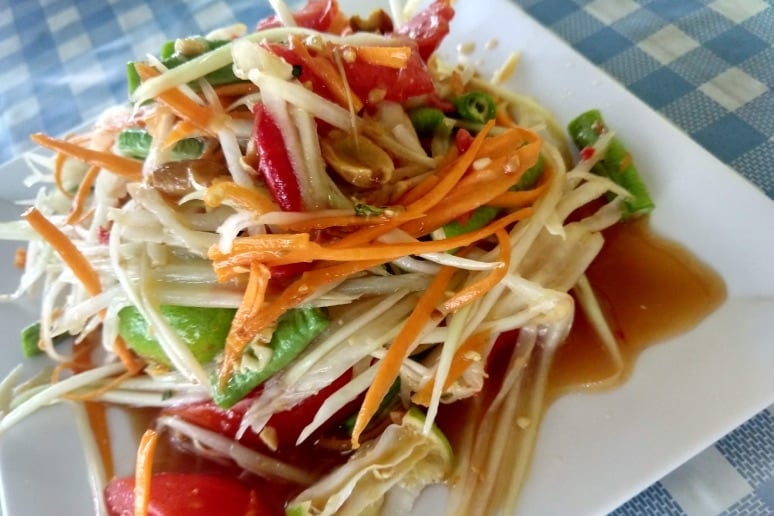
Types of Salad Greens
In the 1970s, iceberg lettuce was the default choice for salads. Since then, people have collectively wised up, and switched to tastier lettuce varieties. Here are some types especially worth trying:
- green leaf or red leaf
- red oak
- butter lettuce
Any good natural foods store and most supermarkets will carry these varieties.
Also consider buying some “baby mixed greens.” These are perhaps twice as costly as other types of lettuce but they make for a positively gourmet salad.
A handful of spinach or arugula will add even more color, texture, and nutrients. Arugula in particular (sometimes called rocket lettuce) has a spicy flavor that’ll make your salad more zingy, plus its leaves are cool looking.
Note that spinach must be thoroughly washed beforehand, as it often carries a lot of sand. Spinach, arugula, and baby greens are commonly sold pre-washed in bags, which can enable you to make a spectacular salad in nothing flat. When buying pre-washed greens I always give them a final rinse and spin in my salad spinner just to be on the safe side.
Don’t Limit Yourself to Lettuce
Many people consider lettuce a mandatory salad ingredient. But there’s no rule book that says this is required. In fact, if you’re not a fan of lettuce, there’s no reason you need to include any when making your salad. Only in North America and Europe are lettuce considered obligatory for salads. In Thailand, the most popular salad is made from grated green papayas. And in the Middle East, the most popular type of salad is tabbouleh (which contains mainly bulgur wheat and parsley).
Excellent lettuce alternatives include grated cabbage or finely-sliced kale. Skinned grated carrots, beets, or broccoli stems are also terrific possibilities. Any of these vegetables will produce a heartier salad than one dominated by lettuce, but they often require some labor-intensive processing. With that in mind, a salad shooter is an unfairly derided appliance. If you’ve got just a little grating to do. these devices will handle it in a jiffy. And cleanup is quicker than what’s required if you broke out your food processor.
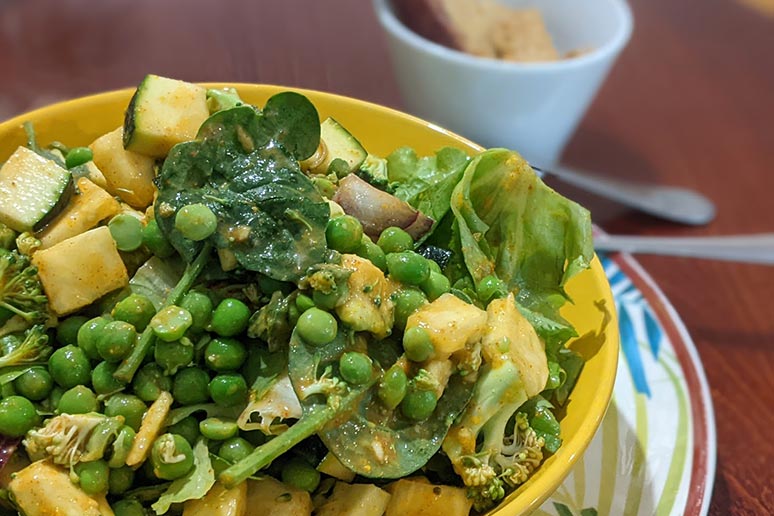
Make Salads in Bulk
Making ten servings of salad takes scarcely more time than preparing two servings. So if you want more salads in your life, preparing big batches that last several days will make all the difference. Just get ahold of some airtight plastic containers. Your salad will stay fresh for at least four days when stored in these containers and refrigerated. Never add dressings until you’re ready to eat, since salads stored with dressing promptly wilt.
Salads kept in airtight containers are perfect to bring along to work or to school. It’s also great to have these pre-made salads in your refrigerator when you order delivery pizza and other take-out food. You’ll be able to save money by ordering less food, and you’ll eat healthier since your meal will contain a nice big serving of veggies.
So there you have it—all the information you need to make a salad that’s incomparably superior to anything served by restaurants. With the multitude of veggies, dressings, and toppings you can choose from, there’s no reason to ever again eat a monotonous uninspired salad.
And all this is just the beginning. If you want to pull out all the stops, get yourself Terry Hope Romero’s cookbook Show up for Salad, which takes salads as seriously as any other meal option when it comes to creating memorable flavor combinations.
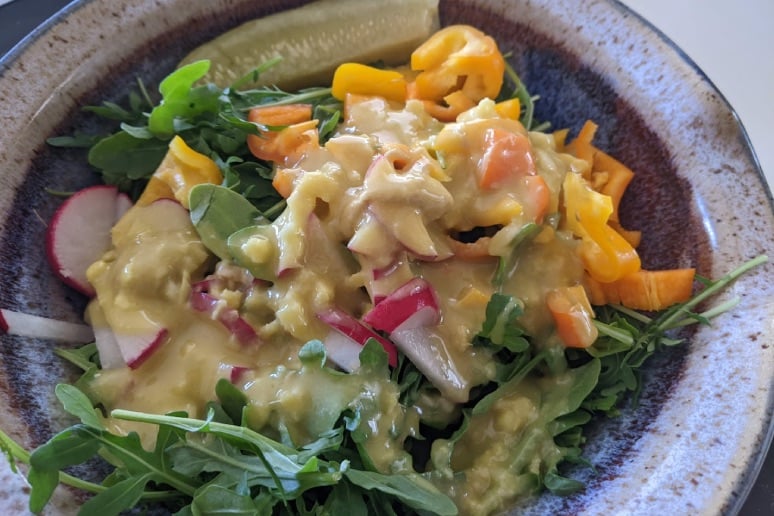
Ordering Vegan Salads at Restaurants
Once you get the hang of making salads at home, the salads served at restaurants will pale by comparison. Lots of otherwise terrific restaurants can’t manage to prepare a decent dinner salad. Too often, you get a poor and unimaginative assortment of vegetables.
That said, salads served by Israeli or Lebanese restaurants rarely disappoint. These cultures take salads seriously, and never treat them as an afterthought. Fresh, vibrant salads are a big part of these cuisines. In addition to fresh chopped lettuce, you’ll get wonderful diced tomatoes, minced bright green parsley, and sliced olives. These places will offer a creamy tahini sauce that’s about the tastiest salad dressing imaginable. They may even top your salad with a a few spicy and protein-rich falafel balls, which will give your meal extra staying power.
These restaurants usually also have a cheap, small side order of tabbouleh on the menu. Adding your tabbouleh side dish to your main salad into a full-fledged meal.
Finally, as you might expect, vegan or vegetarian restaurants reliably serve better-than-average salads.

